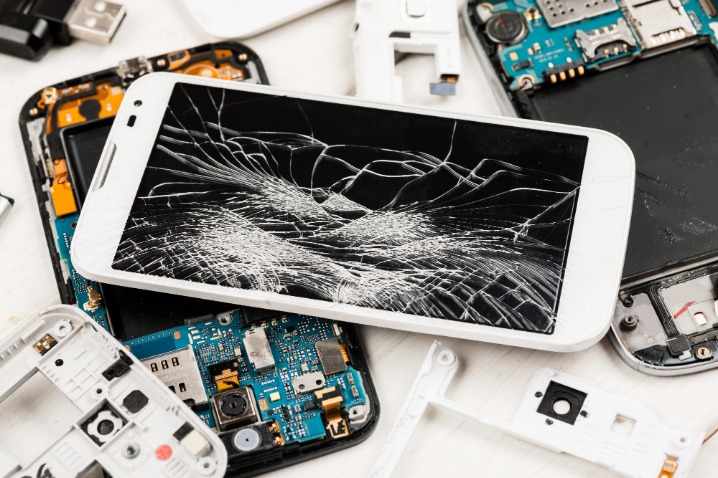Advances in edge AI have opened opportunities for machines and devices, wherever they may be, to operate with the “intelligence” of human cognition. AI-enabled smart applications learn to perform similar tasks under different circumstances, much like real life.
That would help metropolitan areas deal with traffic tie-ups and assist in highway and mass transit planning. Since it fields 80,000 requests each year, Cincinnati officials are deploying this technology to prioritize responses and determine the best ways to handle emergencies. They see AI as a way to deal with large volumes of data and figure out efficient ways of responding to public requests. Rather than address service issues in an ad hoc manner, authorities are trying to be proactive in how they provide urban services. One of the reasons for the growing role of AI is the tremendous opportunities for economic development that it presents. China is making rapid strides because it has set a national goal of investing $150 billion in AI and becoming the global leader in this area by 2030.
People will need the ability to think broadly about many questions and integrate knowledge from a number of different areas. In some sectors where there is a discernible public benefit, governments can facilitate collaboration by building infrastructure that shares data.
How Can AI-Powered Virtual Assistants Transform Industries?
This is important, because it helps researchers to more effectively target certain protein sites which aids drug development and helps gain biological insights that are difficult to discover experimentally. I’ve augmented content in this article using ChatGPT 4 including titles and imagery. The generative AI revolution has been overwhelmingly positive, bringing about incredible advancements in technology and convenience. Read more about Rabbit r1 here. However, as we embrace these innovations, we must remain vigilant about their potential misuse, especially in advertising. Unlike the blunt, interruptive ads of the past, modern AI-driven advertising could be so subtle and integrated that it escapes our notice, influencing our choices without our conscious awareness. Programmers use state/event tables to describe how a series of events are interpreted in multiple states, but this only works if there are a limited number of states that can be easily recognized.
Transforming Industries
By analyzing real-time data from connected devices, businesses can predict when machines or equipment are likely to fail. This enables proactive maintenance, minimizing downtime and reducing costly repairs or replacements.
Ways to Prepare Your Business for an AI-Powered Future
Additionally, staying informed about emerging trends and attending industry conferences and events will provide valuable insights into the future of AI and smart home technology. Networking with professionals in the field and engaging in discussions about the latest innovations will help homeowners make informed decisions and stay at the forefront of this rapidly evolving industry. By analyzing your energy consumption patterns, AI algorithms will optimize the usage of appliances and devices, ensuring maximum efficiency and cost savings. Your smart home will automatically adjust the thermostat, turn off lights in unoccupied rooms, and even suggest energy-saving tips tailored to your lifestyle. As AI technology continues to evolve and become more advanced, concerns about privacy and data security have become more prevalent.
In AIoT applications, biased algorithms lead to discriminatory outcomes, particularly in healthcare, finance, and law enforcement. Connecting IoT infrastructure and data streams with AI algorithms is an immense integration challenge. Organizations must find ways to make different IoT devices, networks, and AI systems communicate with each other, even if they use different protocols. For example, in a chocolate factory, Siemens’ AI monitors temperature, humidity, and equipment to quickly fix anomalies using IoT systems with deep learning models. Automated systems can make independent decisions based on the data they collect with sensors and AI.
AI-powered dispatch software is a system that uses advanced algorithms and machine learning to analyze large amounts of data in real time. This allows the system to make intelligent decisions about routing, scheduling, and resource allocation. In conclusion, the intersection of AI and IoT creates a powerful synergy that has the potential to transform industries and drive innovation. From advanced data analytics to personalized user experiences, the collaborative potential of these technologies is vast. Embracing this convergence will unlock new opportunities for businesses, improve operational efficiency, and enhance customer satisfaction. As we move forward, organizations that successfully navigate this intersection will gain a competitive advantage and shape the future of technology-driven industries.
PwC, a professional services firm, predicts that AI will add $16 trillion to the global economy by 2030 while McKinsey puts the figure at $13 trillion. Sundar Pichai, CEO of Alphabet Inc and its subsidiary Google, has described developments in AI as “more profound than fire or electricity”. As Mr. Pichai’s comparison with electricity and fire suggests, AI and ML are general-purpose technologies capable of affecting entire economies. It excels in recognizing micro and macro patterns imperceptible to humans and can be very useful. Ever since the possibility of making machines learn by themselves came into existence, its applications have been used in almost every sector of the economy. Last but not least, we have smart applications, a much-needed tool for the e-commerce industry. Smart assistants can assist online shoppers in purchasing their favorite products seamlessly in your online store.
As AI-enabled IoT solutions bring benefits like smarter data-driven processes, improved user experience, and resource usage, they are used across many industries and verticals. The Internet of Things (IoT) is transforming with Artificial Intelligence (AI) integration. As this combination provides useful insights, enterprises adapt AI to improve their existing IoT applications. For example, Nokia’s production site in Oulu, Finland, achieved a 30% increase in productivity and a 50% faster time-to-market for their products with digital twins and intelligent automation. AI is a boon for improving productivity and efficiency while at the same time reducing the potential for human error.



